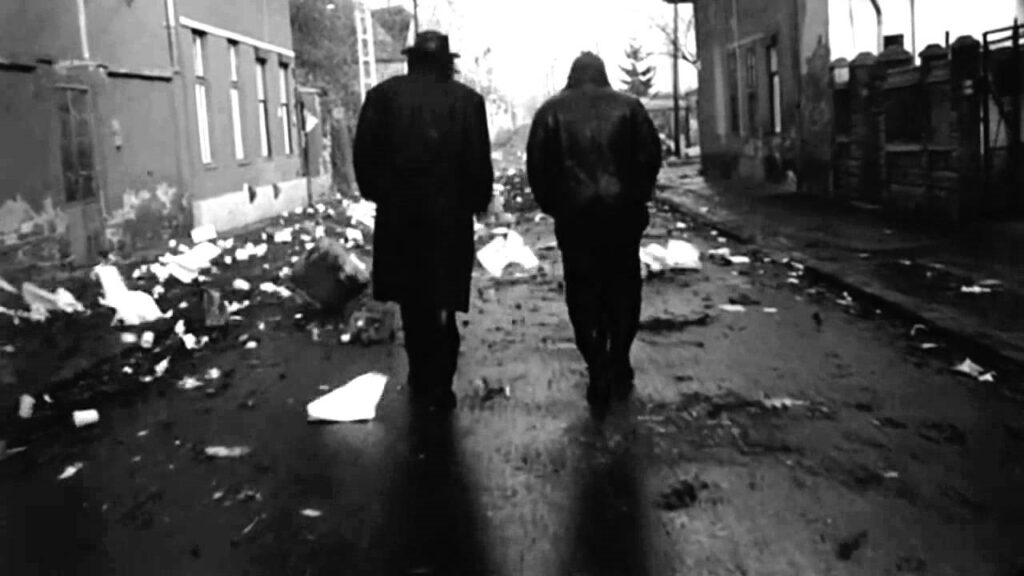
Editor’s note: Our guest blogger, Simone Bassett, submitted this post at the height of the pandemic. I admit I was concerned about people watching futility-of-life pics at that time. For those of you who would have been up for it during the deepest darkness, I hope the delay will not decrease your interest. For those, like myself, who needed some hints that we were emerging before taking on such themes, please enjoy Simone’s post now. And though we just finished Mental Health Awareness Month in May, a reminder that it is important to prioritize your mental health year-round. If you or anyone you know is struggling with a mental health concern, IU offers support and resources for students (https://www.indiana.edu/hoosier-life/health-wellness.html) and staff/faculty: (https://hr.iu.edu/benefits/eap.html).
Picture this: You feel like your country and maybe the entire world are crumbling all around you. The monotony of your regular life stretches days into months before your very eyes. You complete meaningless labor only to continue your pitiful existence, dreams of greatness or even just fulfillment long lost to the weathers of time. If this at all sounds like your day-to-day life in America in the 2020’s, you may find yourself relating to the downtrodden protagonists of Sátántangó.
Set in Hungary during the fall of the USSR, the movie unfolds on a group of people stuck in a country without a government that was once run entirely by the government. Squatting in the desolate ruins of a collective farm, they eke out a generally miserable existence on very little money, until the charismatic Irimiás seemingly returns from the dead with promises of helping them escape to a better life. To say anything more would do a disservice to first time viewers, so I implore you not to read the Wikipedia plot summary.
Of course, the 7 hour 19 minute runtime is in the kindest terms a daunting length for a film. Sátántangó ranks as the 13th longest narrative film of all time, and the length can be palpably felt in the editing as well: there are less than 150 cuts in the entire movie, which averages to an astounding 3 minutes per take, with some of them lasting upwards of 10. However, social lives are at an all-time slump, and once the initial shock subsides it starts to become unlike any other film. The villagers’ long walk to an abandoned building in the middle of the film that would traditionally be at most a ten-second sequence is turned into a ten-minute journey, and the audience ends up wondering along with the characters what got them into this predicament and what could possibly be awaiting them ahead. The meditative pace adds a profound depth to the comically non-heroic protagonists, and you will find yourself wishing for just one thing to go right for them in this wasteland. My only warning is that you probably won’t feel any less downtrodden after the credits fade off into the top of the screen.
Pandemic Pics II: Feeling listless and unsatisfied in quarantine? Feel listless and unsatisfied in bustling 1960’s Paris in Cléo from 5 to 7.
Continuing the trend of existentially sad and temporally realistic films set by Béla Tarr’s Sátántangó, a second pandemic pic is French auteur Agnes Varda’s Cléo from 5 to 7. Made in 1962, Cléo displays the distinctive youthful and carefree attitude of the French New Wave made famous by Jean-Luc Godard, who also stars in a meta-cameo role. Over its 90-minute run time, the film shows in almost real time two hours in a young Parisian woman’s life.

The film follows the eponymous Cléo, a selfish and shallow singer whose air of aloofness is thrown off by a possible diagnosis of malignant cancer. After an especially ominous tarot reading at 5:00 PM, we see her wander around with various friends who continually fail to cheer her up as she waits for the test results at 7:00. As 7 o’clock approaches, Cléo starts to wonder about what would happen were she to die and be forgotten, and how long her fame as a singer could possibly last. If you need a film to remind you that life is just a short gasp for air in an infinite ocean, Agnes Varda might have made the right feature for you.
Guest blogger Simone Bassett has been part of the Media Services Desk Staff team for several years. Among other subjects, Simone studies film and Japanese, and she has studied abroad in Japan through Indiana University as well. Simone is a Spring 2021 graduate and as such will no longer work at Media Services. We warmly thank her for her many contributions to the department over the years and wish her the very best in her next adventures!
2 Comments
Thank you for reading the blog! We love reader feedback! Teşekkürler (I hope that’s correct!)
Çok değişik ve ilgi çekici bir paylaşım olmuş. Emeği geçenlere teşekkür ederiz.
Loosely translated: It was a very different and interesting post. Thank you to those who contributed.